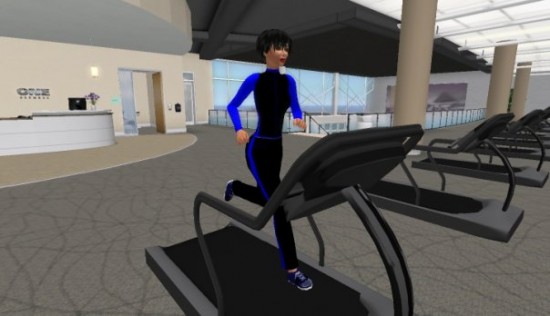Club One’s two virtual weight-loss programs last year were a clear success — participants lost as much or more weight as in a similar program held in a real gym, and made more positive lifestyle changes. (See How Club One lowers your weight and BP virtually and Study: Virtual health club delivers real weight loss.)
But the San Francisco-based Club One, Inc., which has 20 clubs with 50,000 members around California and one virtual facility in Second Life, has decided against running the next session, previously scheduled for this spring.
The big problem? The lack of an educated marketplace.
“When you look at the general consumer, they don’t really know what an avatar is,” said Celeste DeVaneaux, CEO of Club One Island in Second Life.
Club One will have to create a market from scratch, she said.
Doing this in the retail consumer space is very much cost prohibitive, she added.
Club One Island’s virtual weight loss program includes multiple hour-long sessions a week led by trained nutritionists and physical fitness experts with at least two additional staff members on hand to provide technical support and general oversight. In addition, the program requires custom-made equipment and animations.
For example, Club One Island participants last year were able to swim in a virtual pool, go wind surfing, ride bikes, float on inner tubes, go hang gliding, and even use virtual exercise equipment such as treadmills, stationary bikes, and weight machines.

Each of these activities required the club to hire designers to build the virtual facilities, and animators to create the virtual movements the avatars would make.
As a result, the price tag for each virtual session was over $15 per participant — a hard sell for a program that takes place online.
“It’s really cost prohibitive,” DeVaneaux told Hypergrid Business.
And that’s before public outreach is calculated in.
“The cost to educate at a consumer level is really staggering right now,” she said.
Apple was able to launch a new category of devices — tablet computers — when others failed in part because of its global brand name recognition and massive advertising and marketing budgets.
But when Apple was first starting out, it faced a similar challenge in trying to sell personal computers as Club One faces today with its virtual programs, DeVaneaux said.
“Apple knew that the consumer was not yet ready for computers because they could not even comprehend why they might need them,” she said. “So Apple focused on research, higher education, and government, knowing that if computers were adopted by these entities that the consumers would follow.”
In line with that thinking, Club One is now focusing on the institutional market, such as patient education programs for health care companies.
However, Club One will continue to look for ways to bring its programs to the masses, she added.
“I really believe in this program to help people change their lives and health,” she said. “[But] because the technology is so new a concept it is a painfully slow process.”
- OSgrid back online after extended maintenance - April 16, 2025
- Analysts predict drop in headset sales this year - March 25, 2025
- OSgrid enters immediate long-term maintenance - March 5, 2025
